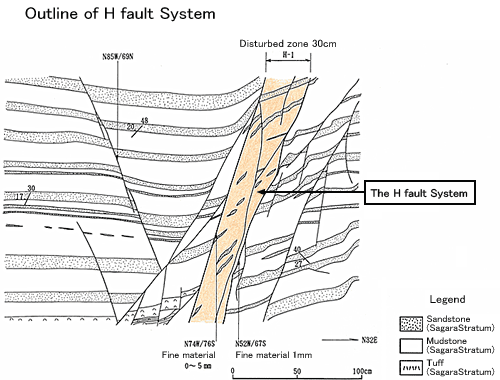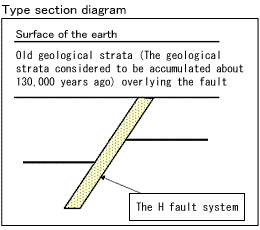Appropriate Fault Assessment
The Results of Surveys of the H Fault System
According to the following survey results, the H fault system was formed while the geological strata were still soft and before the bedrock consolidated (several million years ago), and has not been active since consolidation of the geological strata. At the very least, the H fault system has not been active following the Late Pleistocene period (about 130,000 years - 10,000 years ago), and is not considered to be a cause of earthquakes or to cause shifts due to earthquakes.
The Fault Characteristics of the H Fault System
It has been confirmed that the H fault system was settled while being pulled and stretched, and fossils near the fault have not been fractured. Therefore, it is assumed that the H fault system formed while the geological strata were still soft (before becoming bedrock) soon after sedimentation (several million years ago) of the strata (Sagara layer), and has not been active since consolidation of the geological strata.

Relationship With the Geological Strata Resting Above the H Fault System
It has been confirmed that the geological strata that accumulated on top of the H fault System about 130,000 years ago show no signs of displacement.
In this region, a large earthquake occurs every 100 to 150 years, for example the Ansei Tokai Earthquake in 1854 and the Tonankai Earthquake in 1944, and there has also been no motion in the system when these large earthquakes occurred.




